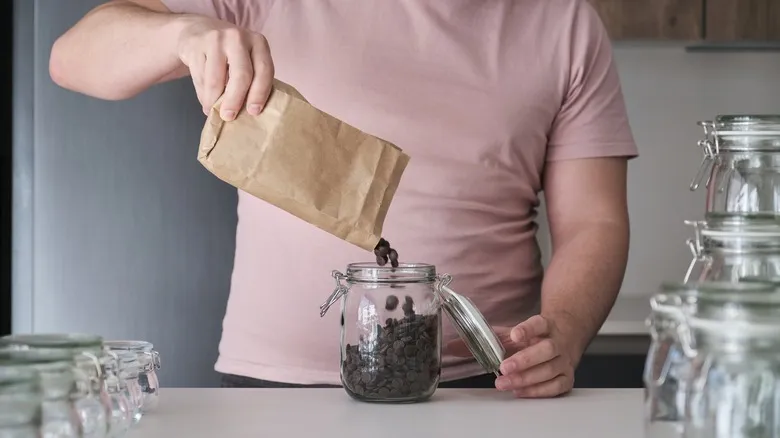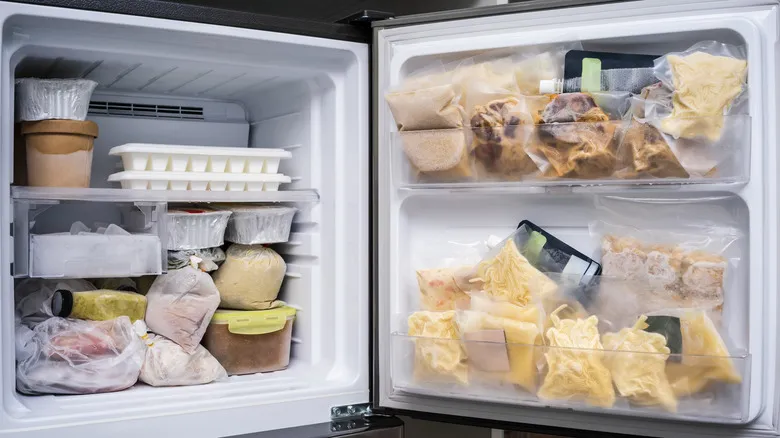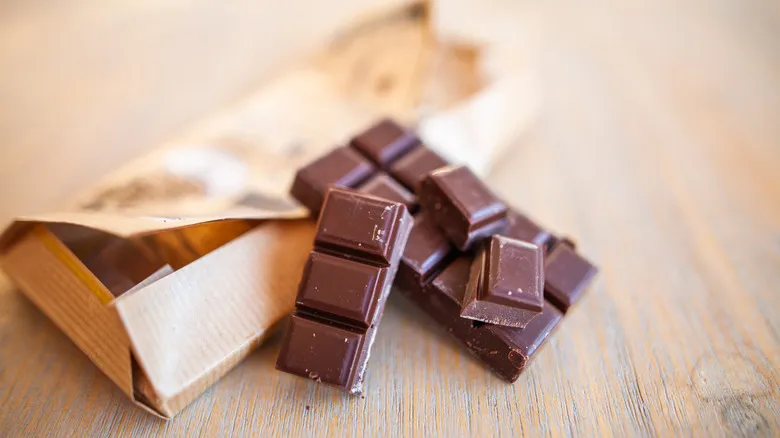Oxygen and temperature swings are to be avoided

It's clear that leaving chocolate in a warm car is a bad idea, but temperatures above 70 degrees Fahrenheit (and humidity over 55%) can also negatively affect chocolate's texture and appearance. The ideal storage place is a cool, dry pantry, but if your home’s climate often exceeds these conditions, the refrigerator is a suitable alternative. Just make sure to seal the chocolate tightly to prevent it from absorbing the odors and flavors of nearby foods, as cocoa butter tends to do. When storing your chips, chunks, or bars in the pantry, keep them away from heat sources (like an oven), direct sunlight, and oxygen — all essential to prevent oxidation or melting and to maintain their delightful flavor.
In the unlikely event that you won't be using your chocolate for a while, the freezer is your best option — because wasting chocolate is a crime. You can freeze an unopened bar, a bag of chips, or virtually any type of chocolate, keeping it as fresh as the day you purchased it for up to 18 months. To preserve its texture, gradually acclimate the chocolate by first placing it in the fridge for a day before moving it to the freezer. When you're ready to enjoy it, reverse the process to gently bring it back to room temperature without compromising its texture or taste.
How long can properly stored chocolate last?

Curious about whether that long-lost stash of Halloween candy at the back of your pantry is still good? If the chocolate is still in its unopened wrapper, you’re likely in luck—it’s probably still perfectly edible. Plain milk chocolate and dark chocolate (which tends to last longer since it doesn’t contain milk) can remain good for up to two years when stored correctly. However, chocolate treats with soft fillings, like truffles, or those containing nuts or cream tend to spoil more quickly, usually within a couple of months, due to these additional ingredients. High-quality artisan or specialty chocolates made without preservatives should ideally be consumed within a few weeks.
Regardless of the chocolate type, trust your senses—if it tastes or smells off, it’s best to discard it. Unlike other foods with clear expiration dates that show obvious signs of spoilage, chocolate generally deteriorates gradually in quality and flavor when exposed to light, oxygen, extreme temperatures, or sudden temperature changes. If you notice a white, dusty coating on your chocolate, don’t worry—this is a harmless (if unappealing) phenomenon known as "bloom," and your treat is still safe to eat. To prevent these blooms, which are caused by moisture or temperature shifts, store your chocolate properly or simply enjoy it quickly—though we doubt we need to remind you of that!
Recommended

The Best Way To Store Leftover Cut And Uncut Zucchini

Is It Safe To Eat Ground Beef If It Has Turned Gray?

The Worst Places In Your Kitchen To Store Potatoes

In Case Of A Power Outage, How Long Does Food Last In The Freezer?
Next up

